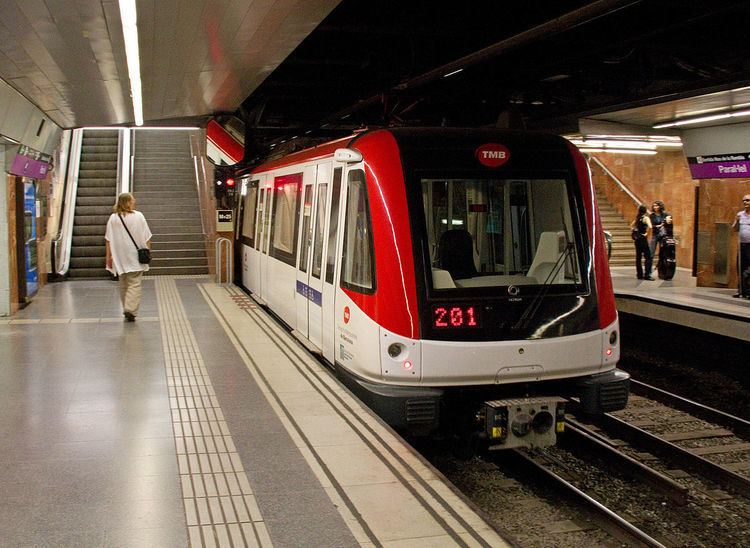Replaced 1000 and 1100 Series Number built 56 | Entered service 13 March 2008 Number in service 43 | |
 | ||
The 9000 Series is a series of heavy rail rolling stock that operates on lines 2, 4, 9 and 10 of the Barcelona Metro. Transports Metropolitans de Barcelona (TMB) awarded the contract for the construction of the 9000 series to Alstom in 2002. Constructed in Belgium, France and Spain, they are part of the Alstom Metropolis family of underground trains. Today, the 9000 series also operates on the Santo Domingo Metro and Lima Metro in Latin America.
Contents
Order and entry into service
TMB's contract with Alstom originally specified 50 driverless trains for line 9 only: in July 2005, however, TMB modified the contract to specify 34 semi-automatic trains for lines 2 and 4, and 16 driverless trains for line 9. In April 2009, TMB extended the contract to order 6 additional driverless trains for line 9.
24 trains entered service on Line 2 from 13 March 2008, cascading the 2100 Series to Line 4. 10 trains also entered service on Line 4 with the 2100 Series, replacing the remaining 1000 and 1100 Series trains. The remaining 16 trains entered service on Lines 9 and 10 when the first stages of the lines opened from 13 December 2009, with six more trains to follow when more sections of lines 9 and 10 open.
Design
The trains are capable of speeds of up to 80 km/h (50 mph).
In Barcelona, each train consists of five walk-through cars with longitudinal seating throughout: a five-car train has 112 seats and a three-car train has 64 seats. The end cars contain dedicated spaces for wheelchair users and bicycles.
The trains have closed-circuit television and passenger alarms for public safety, visual and audible door indicators, LCD screens for travel information and advertising, and line maps with lights that indicate the next stations. SEC Lighting provided the semi-recessed fluorescent saloon lighting for the trains.
Variations
In Barcelona, there are two versions of the 9000 series fleet:
Operation
The 9000 Series presently operate on lines 2, 4 (the latter running in conjunction with the 2100 series), 9 and 10. In an unlikely event of a shortage of trains, they may operate on any standard gauge sections with an overhead power supply.
Roster
Individual cars of the 9000 Series have a four-digit number beginning with 9: originally, the car numbers ranged from 9001 to 9200 for the motor cars, and R9001 to R9550 for the trailer cars, with 50 trains available in total. Due to the order for 6 additional trains in April 2009, the numbering ranges for the 9000 Series is currently as follows:
In further detail:
The 11 automatic trains that are stabled at present will go into service when more sections of lines 9 and 10 open.
9000 Series abroad
Two other metro systems operate the 9000 series, with segregated driver cabs and walk-through cars: the Santo Domingo Metro operates 34 three-car trains with a similar external livery, and the Lima Metro has operated 19 five-car trains in its own external and internal livery since February 2013. All of these trains were also manufactured in Belgium, France and Spain.
9000 Series in culture
The Via Oberta miniature railway operates a live steam scale (1:11) version of the 9000 series in the Barcelona Metro livery.
